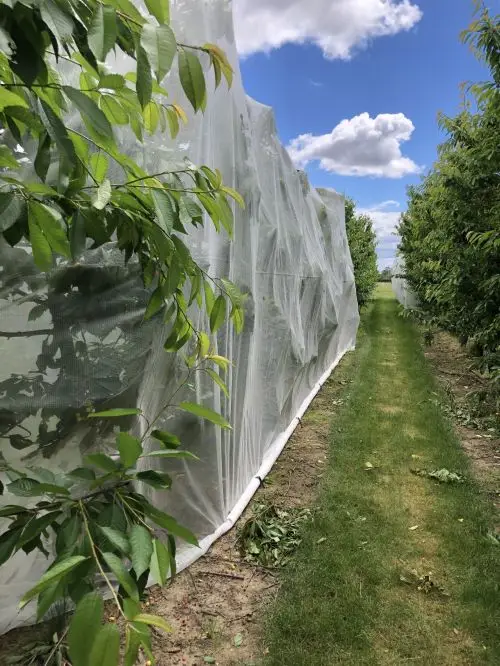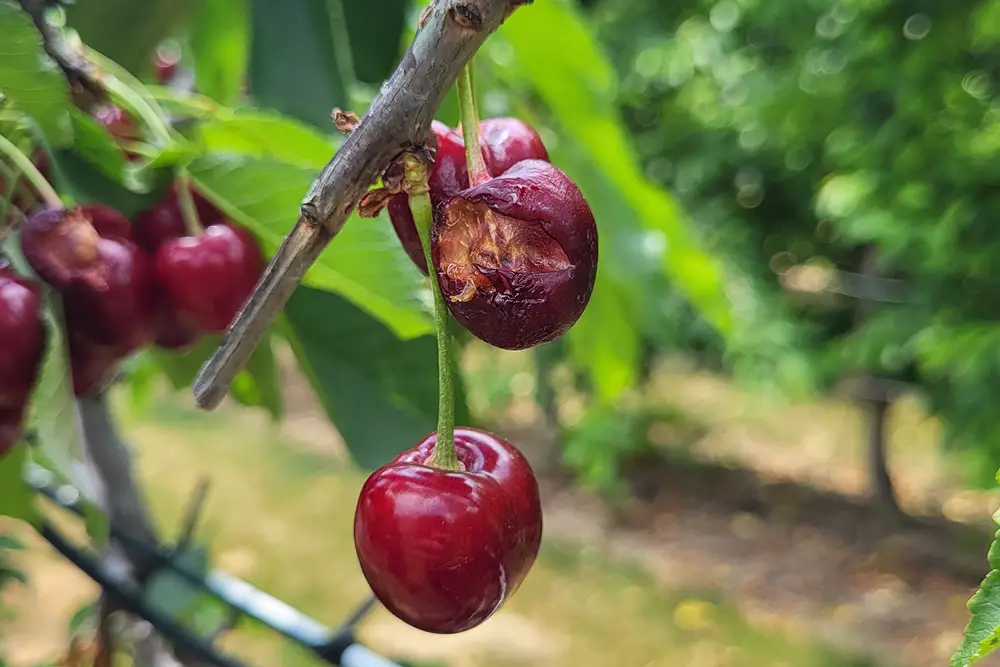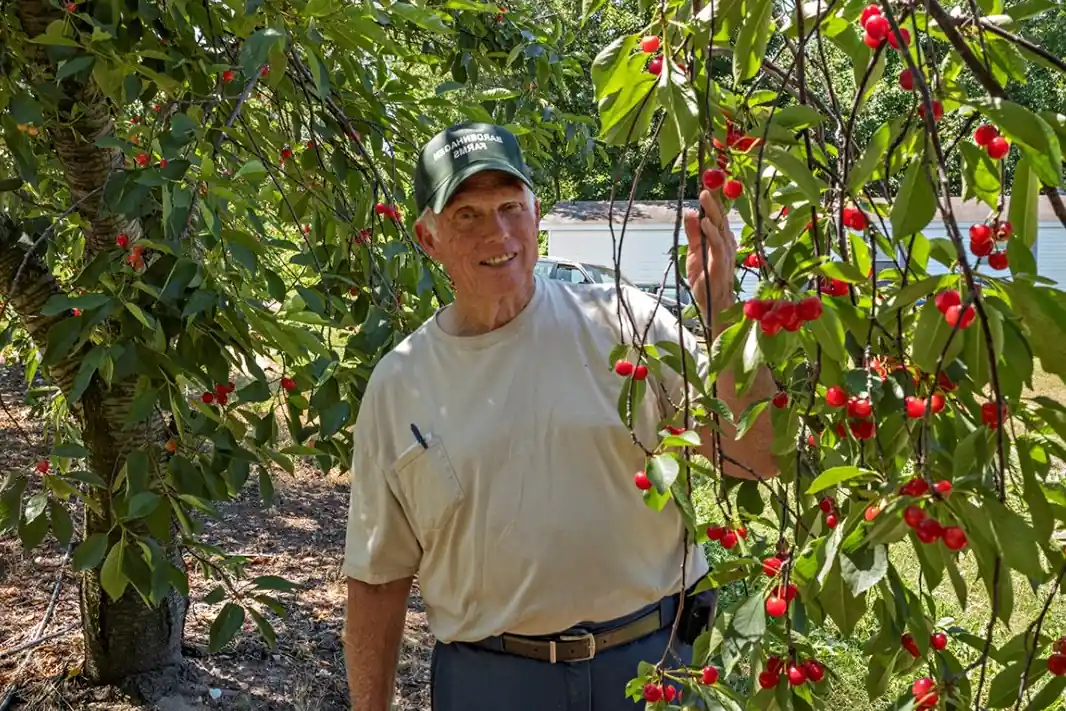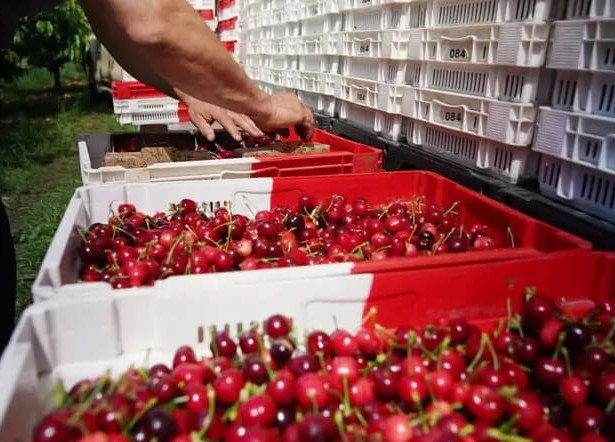The Drosophila suzukii (SWD) and bird damage pose significant challenges for Michigan sweet cherry growers. The risk varies based on weather conditions: SWD thrives in humid climates, while bird damage increases in dry conditions.
Netting as a solution
Using netting can effectively prevent both bird damage and SWD infestations in all weather conditions. This approach is particularly viable for high-density, low-height cherry orchards. Researchers tested insect-proof netting that also blocks birds and assessed its impact on fruit quality and environmental conditions.
 Netting experiment in high-density sweet cherries at Clarksville Research Center, 2024; photograph by C. Lindell
Netting experiment in high-density sweet cherries at Clarksville Research Center, 2024; photograph by C. Lindell
Net installation
Between 2023 and 2024, trials were conducted at the Clarksville Research Center and the Northwest Michigan Horticultural Research Center. Netting was installed after pollination but 2-3 weeks before harvest, covering sections of high-density cherry orchards. Adjacent uncovered rows served as controls.
The netting was installed above the support wire and sealed at the base using PVC pipes and ground stakes. The net edges were rolled and secured with large binder clips.
The ExcludeNet netting was used, purchased from Berry Protection Solutions. Mention of specific brands does not constitute an endorsement by Michigan State University Extension.
Bird damage and SWD presence
- Bird Damage: At harvest, damaged cherries were counted. Netting significantly reduced bird damage in both 2023 and 2024.
- SWD Infestation: Traps and bait stations were monitored weekly. In 2023, SWD pressure was low due to drought, while in 2024, SWD pressure was high. However, in netted areas, the number of SWD adults and larvae was significantly lower than in uncovered rows.
 Bird damaged cherry in control site, 2023; photograph by S. Collino
Bird damaged cherry in control site, 2023; photograph by S. Collino
Impact on environment and fruit quality
Researchers monitored temperature and humidity under the netting. No significant differences were found compared to uncovered rows.
Fruit quality was evaluated based on color, weight, sugar content, and defects:
- No effect on fruit color or fruit cracking.
- In 2024, netted cherries were heavier but had a lower sugar content than controls.
- No impact on fruit canker.
Considerations for netting use
While netting shows strong potential as a pest management tool, there are logistical challenges:
- Installation: Large-scale implementation requires secure fastening to withstand wind and ensure accessibility for orchard maintenance.
- Pesticide Application: Sprays were applied normally, but the effectiveness of pesticide penetration through the net was not measured.
Overall, netting effectively reduces bird damage and SWD infestations without compromising fruit quality. However, proper setup and management are essential for its success.
Read full article: Michigan State University
Cherry Times – All Rights Reserved














